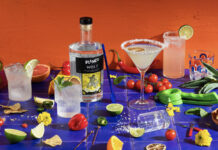In the rapidly growing craft distilling industry, no other question — save the definition of the term “craft” — triggers as much heated debate as the meaning behind the title of “Master Distiller.” Much has been discussed or written about new, inexperienced distillery proprietors who generously bestow the title upon themselves in order to enhance the marketability of their products. Even large, established distilleries have not been immune to the lure of (mis)using the title when it is convenient to do so.
Rather than becoming embroiled in the politics of the meaning of the title, let us explore what the term master distiller has historically meant by examining it in the context of three different cross-cultural distilling traditions: that of rum, Cognac, and bourbon. In order to gain a deeper perspective of the role of the master distiller, and more significantly, what it takes to become a “master” of the various professions within the trade, I interviewed three people from those traditions who are considered by their peers to be masters: Hubert Germain-Robin, Master Distiller and Master Blender of upscale alambic-style brandies; Luis Ayala, Rum Consultant, Master Distiller and Blender who works throughout the rum-producing world; and Dave Scheurich, a Master Distiller of world-class bourbon.
These men have more than a hundred years of combined experience, and have delved deep within each of their own distilling traditions. They have also in some way gone beyond the established boundaries within those traditions. Perhaps by profiling their careers, and by looking at their own definitions of what it take to be a “master,” we can understand the meaning more thoroughly.
Hubert Germain-Robin
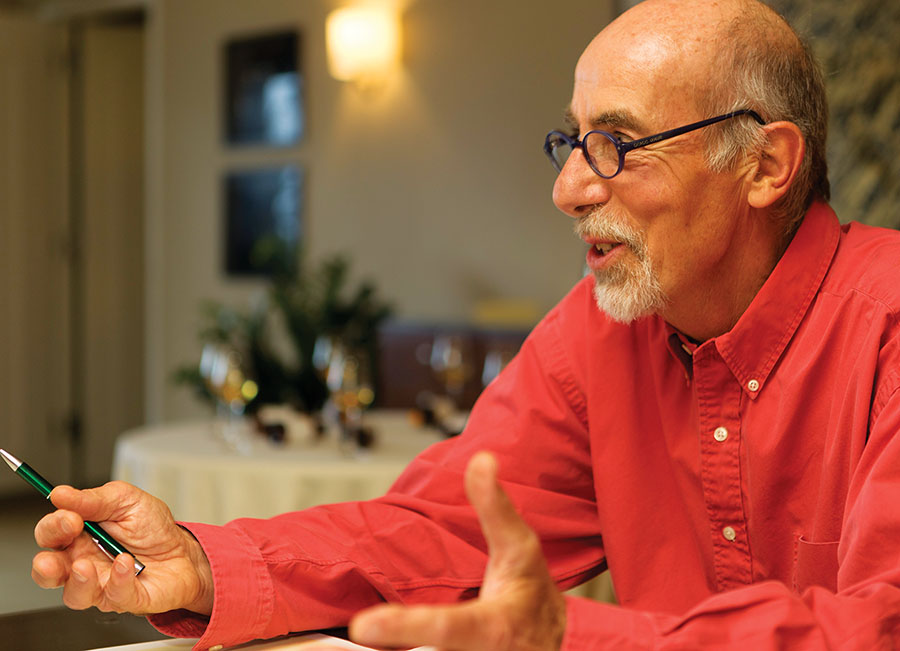
As if his 40-some years of experience in distilling and blending was not enough, 11th generation “poet-philosopher” and distiller Hubert Germain-Robin hails from a family of distillers and merchants of the Cognac house Jules Robin & Cie.
In his youth, during breaks from school, he toiled away in the family’s barrel cellars and bottling line. As a young man, he became infatuated with the science and art of distillation and went on to study at the Fondation Fougeret School of Distillation of the Station Viticole de Cognac, where he learned the principles of double distillation. During this time, Germain-Robin had the opportunity to hone his skills on both a propane-fired still and a wood and coal-fired still. It was particularly through learning on the wood and coal-fired pot stills that he was able to refine his technique, as these types of stills requires extraordinary skill in keeping a consistent temperature.
Germain-Robin later studied with Master Blender Pierre Frugier at the Martell Cognac, one of the oldest, largest, and most respected Cognac houses. He augmented his education by taking tasting courses at the Organisation Economique du Cognac. After his apprenticeship, he distilled in various regions of the Cognac area in order to learn the methods of distillation required by the different Cognac houses. This gave him a solid grounding in traditional methods of Cognac production.
When Germain-Robin came to California in 1981, he was impressed with the diversity of varietals, microclimates, and freedom from the harsh restrictions imposed upon Cognac producers in France. In the rural mountains of Mendocino County, he co-founded the Germain-Robin alambic brandy distillery and began distilling Pinot Noir and French Colombard wines in 1983. With that, Germain-Robin’s creative genius was unleashed, and he has since changed the landscape of world-class brandy by working with nontraditional grape varietals. In recent years, he has been sharing his deep knowledge and experience with others as an international consultant.
When asked about the role of the master distiller in traditional Cognac and brandy production, Germain-Robin said this job title really depends upon the size of the distillery. There is a big difference between the small producers, who do virtually all aspects of production themselves, and large producers, where there are different professions: that of the grower, winemaker, distiller, cellar master, and master blender, and the title of
a “Master Distiller” who oversees all aspects of production does not necessarily apply. This system provides points at which more than one person will be involved with the process. Thus, for the larger houses, there are more controls upon quality. For a smaller producer who is handling all aspects of production, it is harder, though not impossible, to truly become a master of all aspects of these different steps.
For the job of a person who distills, though, the career path usually begins with attending a distillation school, then learning on-the-job as an assistant at a distillery. Traditionally, a son might follow his father’s, grandfather’s, and great-grandfathers’s footsteps into this role. Regardless of whether a person was born into the profession or decided upon it later in life, Germain-Robin observes that it usually takes somewhere between 7 to 10 years or more to fully master all the nuances of distillation. This is especially true if one is working with grapes.
In the world of Cognac and brandy, however, the role of distiller, as well as grower and winemaker, is really just the beginning when it comes to nurturing the long life of a maturing brandy. The eau de vie (brandy), once distilled, must then be “raised” for many years in a cellar by someone who is skilled in the art of élevage. Overseeing the process of élevage is the job of the cellar master, who is charged with bringing the eau de vie up slowly and gently in the cellar before it goes on to be blended. The Cellar master must be well versed in different types of oak, stave seasoning, toast levels, when to change the eau de vie to another cask, how varietals evolve in the barrel, when oxidation cycles in the barrels occur, etc. Also, this person must perform tastings regularly and keep track of the progress of each barrel.
As Germain-Robin observes, “The role of the master blender, in the Cognac tradition, is more of an intellectual job that takes at least 10 or more years to do well.” It is not necessarily the same
person as the cellar master, especially in a large Cognac house. Instead, the master blender thinks through how to combine the barrels for a blend and then, once blended, must wait months to see how the components of the blend combine together. “If the components do not marry in a way that is desirable to the master blender,” Germain-Robin said, “then he or she must know how to make adjustments in the blend so that it stays consistent from lot to lot.”
So, in this tradition, what does it take before one becomes a “master” of either distillation or blending? Germain-Robin is careful to point out that it is hard to determine exactly when one becomes a true “master.” “There is always room to grow,” he says. Certainly, experience and time are essential factors.
Luis Ayala
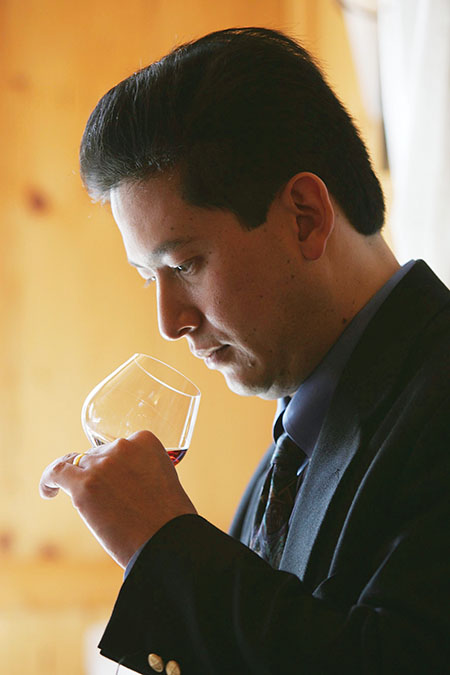
Luis Ayala, Rum Consultant and president of Rum Runner Press, Inc., is the man with whom even the most esteemed “masters” in the rum world consult when they need help with complex formulations and blends, or need to train new distillers and blenders, etc.
Ayala had a quite unique path to becoming a master of distilling and blending. While most “masters” spent their career learning the craft at one or two distilleries, Ayala had the rare opportunity to study distilling and blending with many masters at distilleries though out the rum world. He has delved deep within several of these traditions and through the vast spectrum of rum styles, from Cuban to Guyanese techniques. This gives him an uncommon insight to the myriad methodologies employed within the rum industry. As Ayala explains, “I was fascinated with how varied the approaches were by different companies, even within the same country, resulting in rums that were clearly distinctive. Since then, I’ve had the pleasure of learning under, and working next to, career distillers and blenders who represent the whole range of rums, from the super light to the super heavy.”
However rare and unique Ayala’s own path has been, he relates that this is not a traditional path. Typically, apprenticeship and eventual mastery is achieved through on-the-job training at one distillery. “Traditionally, a young apprentice would be identified and selected for his or her potential and that person would spend the next couple of decades learning under the old master,” Ayala points out, “In today’s world, however, most young people don’t want to stay in the same job for that long. They seem to want mobility, change, faster recognition and a quicker path to riches. It is becoming increasingly difficult to have overlapping decades between the generations. As a consequence, many rum producers I work with are having to hire young adults or adults from other industries — such as from the pharmaceutical or food science industries — and train them in the craft, hoping the time and effort will pay off.”
Just like the Cognac industry, the rum industry has several professions that can lead to mastery; specifically, the role of master distiller and master blender. Ayala illustrates that a distiller who is a “master” has had enough experience to know how to prevent fermentation and distillation mistakes; how to identify and overcome these mistakes if they do happen; how to distill consistently under varying environmental and equipment conditions; and last but not least, how to validate the data from testing equipment.
A master blender, on the other hand, is often a former master distiller, or could possibly be one and the same individual. “This person,” explains Ayala, “needs to have an in-depth knowledge of alcohol transformation inside the barrel, the oxidative processes that happen therein, the nuances of the aging cellars, and the foresight to anticipate how older barrels will affect future productions. With this knowledge, the master blender works alongside the master distiller to define congener types and levels needed to assure that the rums that are extracted from the barrels in the coming years are within the expected parameters. The master blender then uses blending expertise to reduce or eliminate any remaining variants, assuring that consumers can’t easily identify variations between one production batch and the next.”
Dave Sheurich
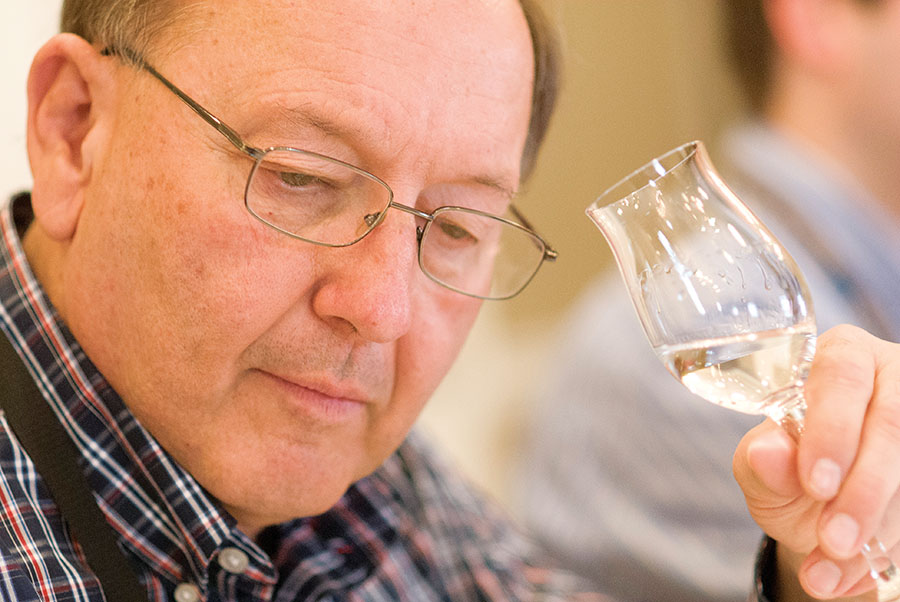
Dave Sheurich is an unassuming Southern gentleman with a remarkable ability to craft witty one-line phrases. “A master distiller,” Scheurich says, “is a guy that’s 80 years old and has been in the business for 60 years.”
Scheurich, who himself has been in the bourbon industry well over 40 years, is a master who has been involved in every aspect of the craft — from distilling, warehousing, processing, bottling, shipping, etc. He is a retired general manager and master distiller at Woodfood Reserve distillery, and currently consults for the alcohol beverage industry. He began his long career in at Joseph E. Seagrams and Sons, where he honed his craft in various positions, from distillery manager to quality-control technician.
As both a master at his craft and bourbon historian, Scheurich notes that the role of the master distiller, at least in the world of bourbon, is a historical development. In the years prior to Prohibition the distillers were the ones, as Scheurich says, who “ran the show.” Immediately after Prohibition and during the Great Depression, however, there was not much money to produce quality bourbon, so stocks were aged only for about two years. And because of the fact that there was little premium quality bourbon, blenders were called in to “fix” it so that it would taste a little smoother.
Scheurich says that in the world of bourbon production, there were usually three primary professional roles: that of master distiller, who is in charge of running the distillery; the master blender, who creates different products, and the master taster, who is in charge of quality and sensory control.
Regarding the role of the master distiller, “This individual,” Scheurich says, “should have a working knowledge of the following: microbiology, chemistry, mechanical aptitude, quality assurance, quality control analysis, lab testing, yeast propagation, environmental control, sanitation, budgeting, accounting, finance, human resources, personnel, legal, sensory judgment and analysis, agricultural, planning, forecasting, procurement, maintenance, power generation, boiler and waste management, security, contracting, leadership, fire protection, safety, OSHA, local, state and federal government regulations, emergency procedures and others. If the master distiller also manages warehousing, bottling and shipping the list is more extensive.”
As to the nebulous point of when one finally becomes a master, Scheurich says, “a master knows what to do when you have an ‘uh-oh’ moment in the distillery.”

